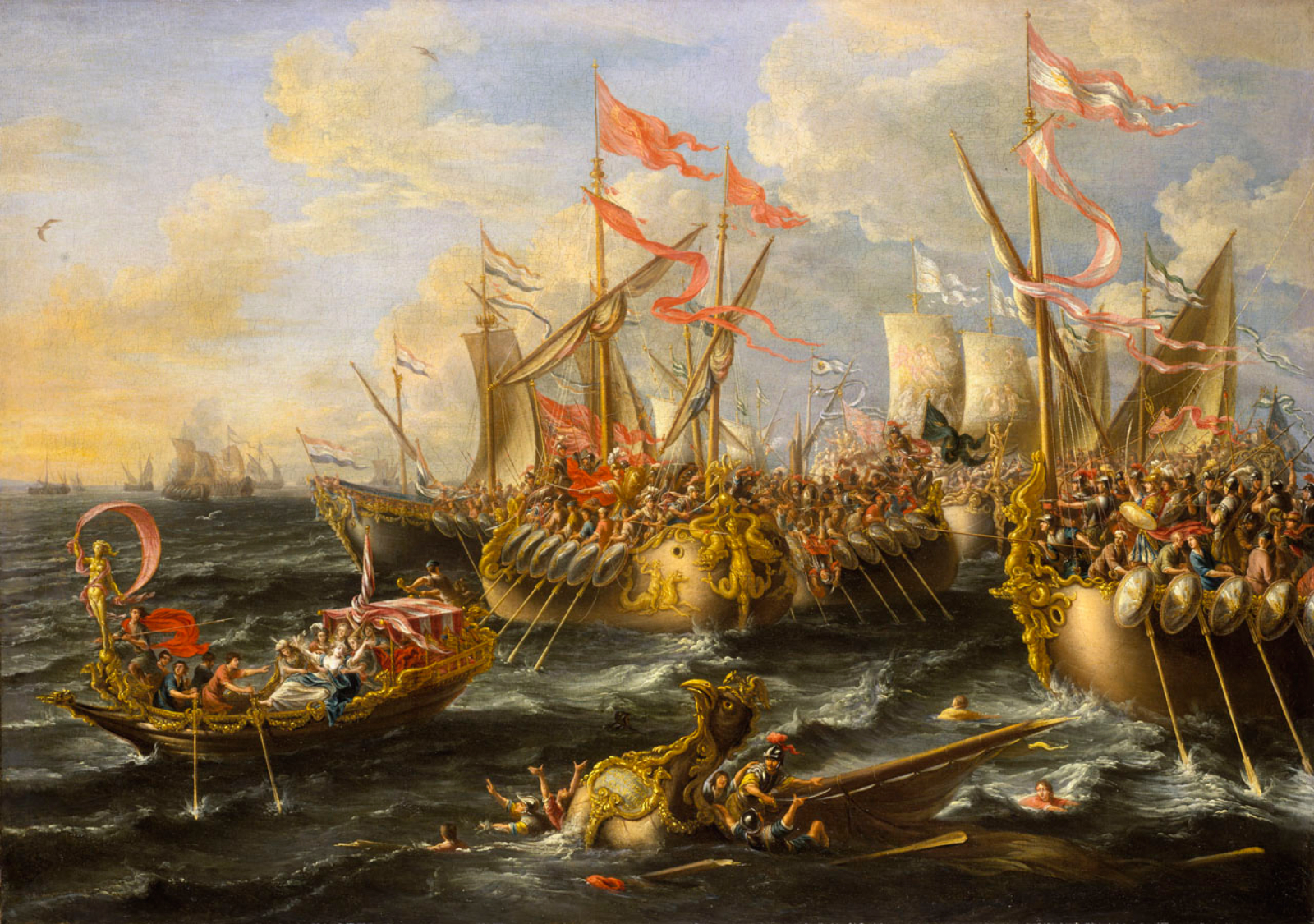The Lovers' Coin: A Rare Discovery
of a Mark Antony and Cleopatra Bronze Coin
| Antony and Cleopatra by Lawerence Alma- Tadema; Courtesy of WikiCommons |
The story of Marc Antony and Cleopatra is a love story of seduction, exotic locations, love-triangles, family, politics, war, and suicide. More importantly, their love affair was connected to the rise and fall of the Roman and Egyptian empire. It is easy to see how their love affair is intriguing tale for centuries worth of audiences from Plutarch's portrayal to Elizabeth Taylor's role to HBO's Rome Series. While there are countless of images produce of their romantic and tragic life; there something extraordinary in contemporary pieces that show both couples.
A recent archaeological discover in Tel Bethsaida (Northern coast of the
The Cleopatra and Antony Bethsaida
This coin found in Tel Bethsaida was actually minted in the
An side
image of the Cleopatra side with a parallel image of the Greek letters
outlined.
Cleopatra's side of the coin, it is somewhat unclear in the photo above, but one can see the Greek word: ΠΤΟΛΕΜΙδΣ .[2] This is the genitive form of the noun Ptolemais which means: "of the people of Ptolemais.[3]" Ptolemais is the name for ancient
"The cities of the ancient Middle East had a habit of minting coins bearing the portraits of whoever was in power," says Dr. Ariel, head of Israel Antiquities Authority Coin Department.[4] In 35 BCE,
However, what does the 15 mean? Dr. Arav explained that book research was essential in the following discovery: The people of Ptolemais valued greatly the event of Julius Caesar visiting the area to rid their waters of pirates. This event happened in 49BCE, the people of Ptolemais therefore used their dating system in reference to 49BCE. Thus, 49BCE being the starting date, 15 years later would be 35-34 BCE.
Dr. Ariel said, "Coins with the portraits of
 |
The
Courtesy of Wikicommons
|
 |
| Silver denarius of Cleopatra VII and Mark Antony , 30's BCE. Courtesy of the |
Thus, this infamous couple continues to engage, fill, and plague our minds. Though, they are long dead and their story known by most; they continue to be the topic of much discussion, debate, and obsession.
~~~~~~~~~~~~~~~~~~~~~~~~~
Main Sources & Contributors:
Private Correspondence with Dr. Arav
The ancient coin of Cleopatra:
There could have been pyramids in Paris
By Miriam
Feinberg Vamosh | Aug. 4, 2013 |http://www.haaretz.com/archaeology/.premium-1.539712
2. The Bethsaida
Secondary Sources &
Contributors:
[1] Vamosh, "The ancient coin of Cleopatra: There
could have been pyramids in Paris
[2] My own
translation and identification of text in red.
[3] Liddell
& Scott, Greek- English Lexicon, Oxford
University
[4] Vamosh
[5] Plutarch
Life of Antony ,
Cambridge University
[6] Vamosh
[7] http://www.wildwinds.com/coins/sear5/s1515.html
[8] The Cambridge Companion to the Age of Augustus/edited
by Karl Galinsky.Cambridge University Press, 2005
[9] British Museum



No comments:
Post a Comment